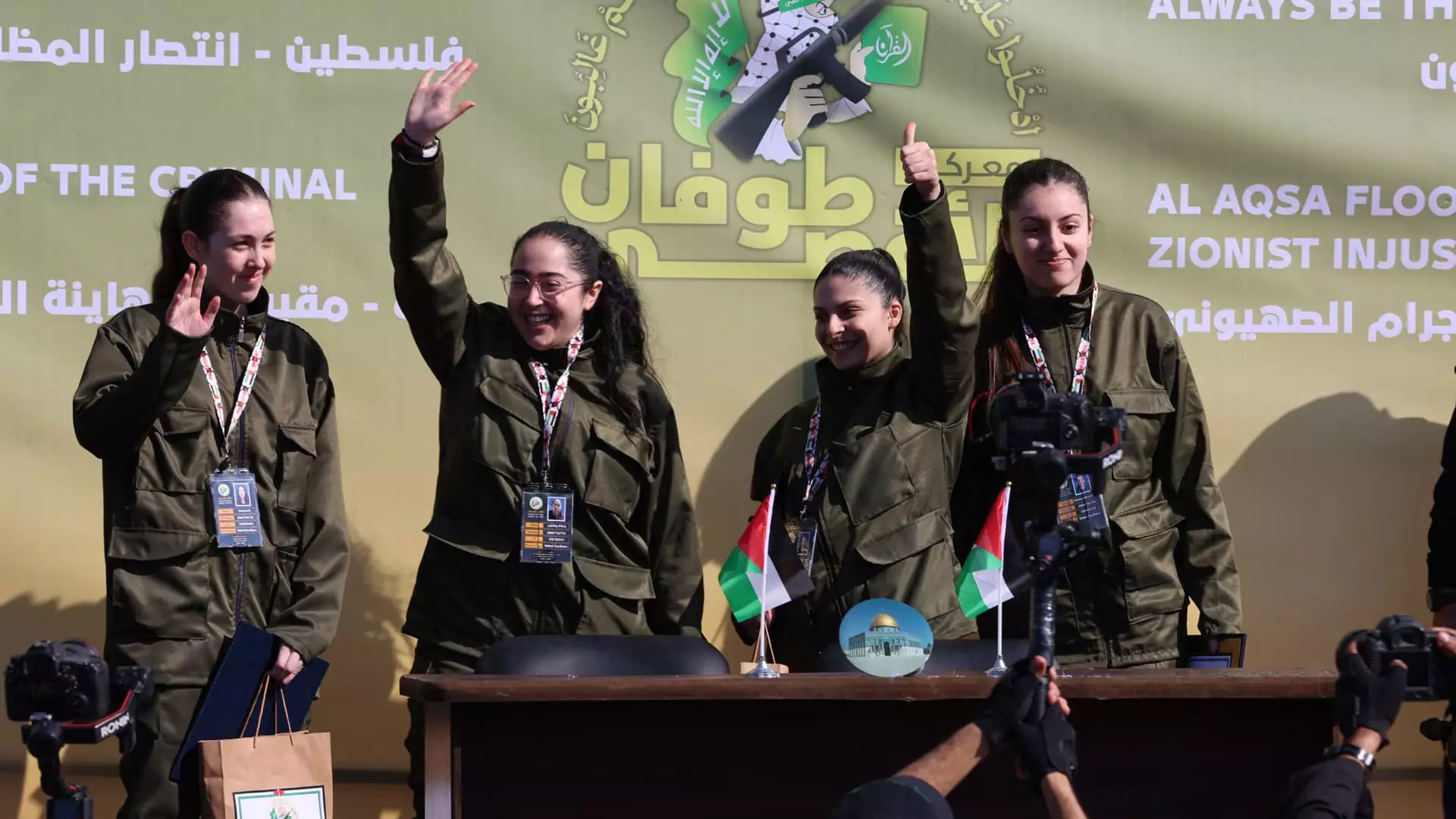The recent hostage exchange between Hamas and Israel has cast a complex light on the fragile peace process and the ongoing humanitarian crisis in Gaza. Released on Saturday, four female Israeli soldiers were handed back to their homeland in a high-stakes trade that saw approximately 200 Palestinian prisoners return to Gaza. This event is part of a broader ceasefire agreement, which aims to halt approximately 15 months of sustained warfare in the region. However, the release is also a vivid illustration of the deep divides that persist and the challenges ahead as both sides navigate this contentious landscape.
The scene during the hostage release was strikingly emotional. The four soldiers—Karina Ariev, Daniella Gilboa, Naama Levy, and Liri Albag—were brought forth in Gaza City, flanked by armed Hamas members and cheered by a large crowd of Palestinians. Their return marks a significant moment for their families, who were seen emotionally reacting to the live broadcast from a military base across the border. Such displays of joy are tempered, however, by the ongoing pain of countless others in the region. While some families celebrated, others faced uncertainty and sorrow, especially in light of the absence of a civilian hostage who was anticipated to be released but was not, leading to feelings of betrayal and disappointment on the Israeli side.
The Larger Humanitarian Context
This hostage exchange does not happen in isolation; it is embedded in a backdrop of broader humanitarian crises. The war, initiated by the Hamas attack on October 7, 2023, has led to an overwhelming loss of life—over 47,000 Palestinian casualties—and immense destruction across Gaza. Israeli forces have sustained significant losses too, with their military campaigns resulting in the deaths of more than 400 soldiers. The grim statistics underscore that both sides bear the scars of this ongoing conflict.
As families hope for peace and stability, the specter of displacement looms large over the Palestinian population, with hundreds of thousands forced to flee their homes in northern Gaza. Amidst this turmoil, Israeli Prime Minister Benjamin Netanyahu remarked on the ongoing restrictions on Gazan Palestinians crossing back to the north—a reminder that even amid celebrations and small victories, the realities of war profoundly shape daily life.
The recent exchange reflects the intricate negotiations mediated by Qatar and Egypt, which have led to several truce agreements punctuated by intermittent fighting. Even with the release of these hostages, the terms of the ceasefire remain under tight negotiation; the inclusion of more prisoners—many convicted and serving long sentences for violent acts—points to the deep-seated grievances that fuel this conflict. Following this latest exchange, 90 hostages remain in Gaza, which remains a significant concern for Israeli families waiting for the return of their loved ones.
Moreover, the unfolding dynamics in the Gaza Strip reveal that the road to lasting peace is fraught with challenges. In the first phase of the ceasefire agreement initiated on January 19, Hamas committed to releasing 33 hostages, with plans to negotiate further exchanges. However, the complex nature of these negotiations reveals the fragility of such agreements, as misunderstandings and breaches of the ceasefire threaten to unravel any progress made.
The Way Forward: Uncertain Yet Necessary
Looking ahead, it is crucial for stakeholders involved—including the United States, Qatar, and Egypt—to facilitate dialogue that transcends mere transactions of hostages for prisoners. Understanding the emotional toll that this ongoing conflict inflicts on both Palestinians and Israelis is essential for fostering a genuine, long-term resolution.
The pathway forward demands nuanced communication and trust-building measures. The international community’s role is paramount in urging all parties to recognize that peace cannot emerge from a cycle of violence and retribution. The release of hostages should symbolize the start of dialogue and understanding, rather than merely serving as an isolated event in a protracted conflict.
As this situation continues to evolve, the hope remains that both sides will seek a shared path toward healing, rebuilding, and ultimately peace—a hope that hangs lightly in the balance amidst the shadows of conflict.

